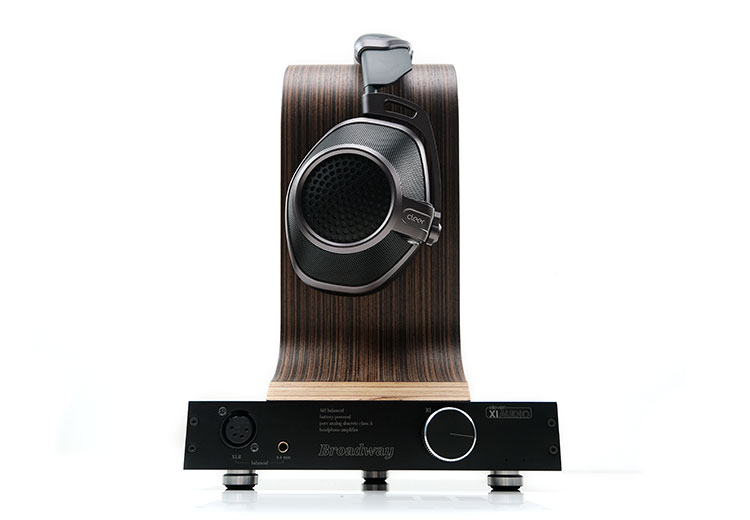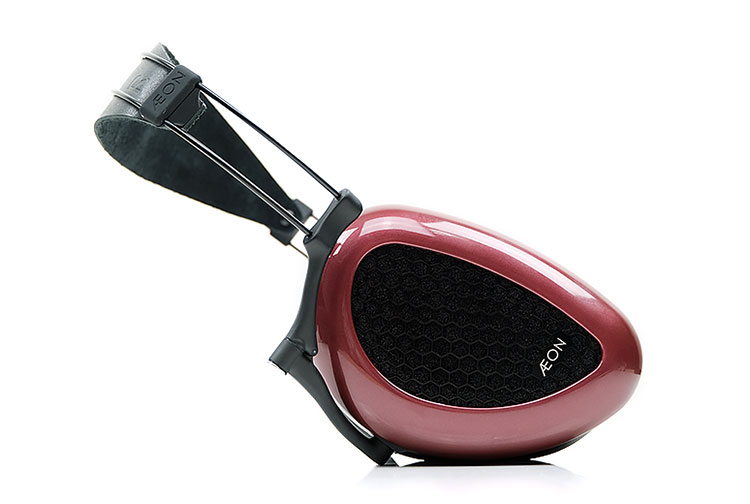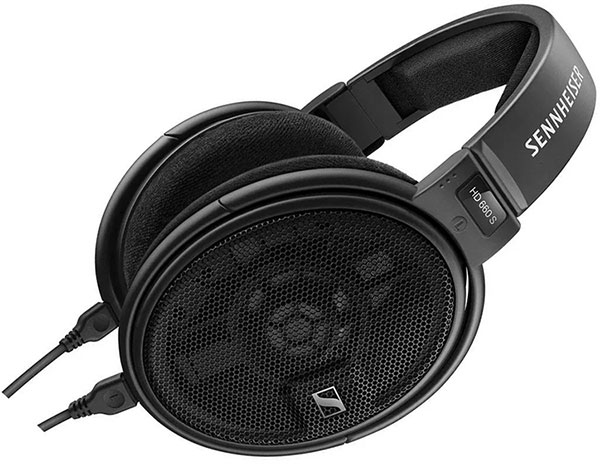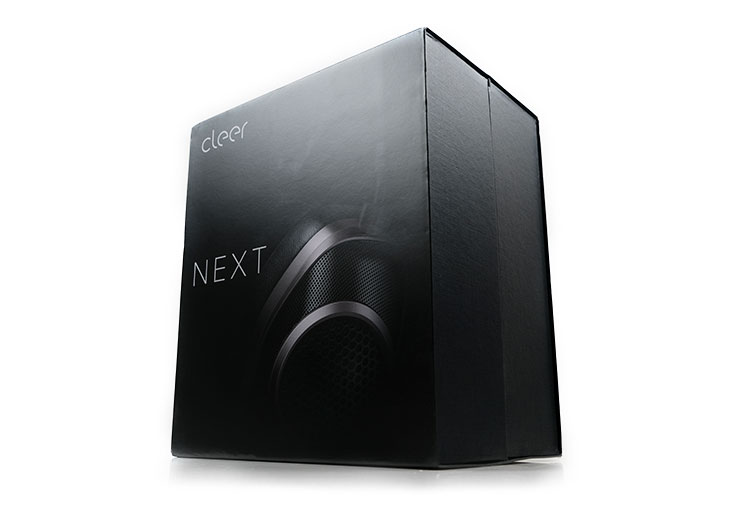Synergy
Efficiency
The NEXT is rated at 16Ω and 92dB SPL which, is a mixed bag in terms of efficiency. On the one hand, it can get loud quite quickly but the number of turns on the volume dial to go from comfortable to quite loud exponentially grows with that 92dB SPL rating.
What that means is, it can run quite well from reasonably powered portable sources such as the iBasso DX300, Lotoo PAW Touch Gold, and the HiBy R8. However, you do need that source to give you at least 350mW, preferably 500mW into 32Ω and be prepared to switch to high gain to keep a lid on the volume level. Both of the mentioned 3 DAPs do quite well in that regard.
However, the NEXT driver can scale quite well and in terms of dynamic range, I do feel it has more to give with a properly powered desktop amp of around 1-2W.
Now, both the R8 and the DX300 can slip slightly beyond 1W at their peak powers but compared to something like the new Auris Audio HA-2SF with up to 2W of output power you can hear that dynamic range get a huge boost. Here I would suggest the NEXT is at its most optimal with a desktop amp with excellent current or above 1W of power.
Portable Pairings
Power management is not everything with the NEXT. Timbral matching is just as important in terms of synergy,. at least for my preferences. I do love how the NEXT can tease out those vocals and give them plenty of preference, however, if a vocal is going to be forward I want them more liquid and richer in tone.
With our DAP selection, the DX300 and the HiBy R8 did very well but once I switched to the LP P6 the NEXT pairing went to the next level. The DX300 came very close in terms of synergy with a wide expansive staging quality, analog timbre, and an excellent vocal harmonic balance. Very little in terms of harshness but not quite what I wanted in terms of dynamics.
The P6, however, gave me a slightly broader textural vocal delivery but enhanced the NEXT’s general dynamic range to an excellent level for a portable player. The R8 actually had the better and more powerful low-end body but I found the vocals had a bit more delta-sigma shine that gelled less well with the NEXT’s peppy upper-mids and treble response.
Desktop Pairings
Taking the same preferences to the desktop played out with similar results with our chosen amplifiers, the Rupert Neve RNHP, Bakoon’s HPA-01, the Monolith Platinum, and the Auris Audio HA-2SF. Basically, solid-state needs to be relatively natural to euphonic in character or pick a SET with good power to get the best results with the NEXT.
The RNHPP is rated at 230mW RMS and whilst I had no issue with volume I felt the sound a bit closed in and not quite right for the fairly spacious capability of the NEXT. The Bakoon paired with the DX300 as the source sounded a lot more natural but still a tiny bit hard-edged in current mode.
The Platinum, (over 2W RMS at 16Ω), did much better with the DX300 and the Lotoo PAW Gold Touch line outs. Both gave a punchier performance and a smoother upper-mids and treble. Vocals were definitely richer and fuller sounding. You can detect the uplift in the dynamic range from the NEXT presentation.
However, the Auris Audio HA-2SE, (over 2W at 16Ω), gave the absolute best in terms of dynamic range, separation, and vocal clarity. I hear nothing hard-edged in the treble at all from the NEXT, clean but not brash or edgy.
It is clear to me the NEXT can scale with a great amp and do well with powerful mid-fi amps also. It can do even better if the amp has a touch of euphony like the Platinum or doubles down on the refinement like the HA-2SF.
Select Comparisons
Dan Clark Audio AEON 2 Open
£720.00 ($899)
Technical
With a very similar price point and a physical profile not a million miles from the NEXT, the AEON 2 Open on paper seems to be a close competitor.
Internally, this is a very different offering, however. The AEON 2 is a planar magnetic driver headphone with a 62 x 34mm diaphragm and a single-sided magnet array. The AEON 2 also uses DCA’s own patented True Flow technology for air management to help reduce distortion.
The NEXT’s is essentially a dynamic driver voice coil but with their patented ironless driver consisting of 20 rare earth magnets in a ring design to deliver a balanced magnetic field and improve the driver’s distortion performance.
In terms of specifications on paper, there is not a lot to chose between these two with the AEON 2 rated at 13Ω and 92dB SPL compared to the NEXT’s 16Ω and 92dB SPL.
However, using the SE output of the Auris Audio HA-2SE and the Rupert Neve RNHP there was a significant difference with the AEON 2 far less efficient and requiring a lot more volume compared to the NEXT.
Design
I actually think these two headphones are close bedfellows when it comes to their respective design flows though the finish and materials used are quite different. Both are circumaural headphones, they both use a teardrop design of sorts and they both use half-gimbal arches for cup articulation and support.
However, the AEON 2 Open is the lighter of the two headphones at 327g compared to 395g aided by its use of carbon fiber cups, NiTinol ‘memory’ metal, and slimmer headband leathers. It also folds neatly into two inside a tiny carry case thereby significantly reducing its overall carry size.
The NEXT has a stronger frame with its aluminum alloy and perhaps a sturdier one also. However, it lacks the folding articulation with a soft pouch so it is technically the bigger headphone to carry around.
Both have excellent headphone pressure distribution and if anything I find the pads on the NEXT to clear the ears a bit better and feel more comfortable as a result. However, there is no denying the lighter weight and wider headband strap system on the AEON 2 is the comfier long-term wear.
Both have decent cables and interestingly, DCA has also moved to a rubbery round PVC jacket on their DUMMER cables that resembles the Canare Star Quad cable that comes with the NEXT. Both handle equally well but the DCA cable is a little lighter suggesting either a smaller gauge or less insulation
Performance
The NEXT is more mid-centric compared to the AEON 2 Opens V/W-shaped profile. Both do have a nice forwarding imaging emphasis for the higher-pitching female vocals but the timbre is quite distinct due to different tuning profiles on both ends of the FR.
The AEON 2 Open is a little more sub-bass biased from 30-100Hz before it drops slowly to around 1k so it is the deeper and more powerful of the two headphones.
The NEXT has a mild mid-bass hump from 100-300Hz for some warmth with no real sub-bass roll-off. The NEXT is not as elevated as the AEON sub-100Hz with a less distinct fundamental but it does allow the mids to breathe a bit more.
The AEON 2 Open elevated low-end also delivers a bit more warmth so it is not as chilled in its timbre with a bit more bloom creeping upwards. I do like the texture it offers, planar bass texture is slightly better in my opinion, and something which the NEXT just falls short in.
However, I prefer the more controlled tuning of the low-end on the NEXT. It just feels tighter, more open, and does not bleed as much into the mids and I do like a good clear mids presentation.
Mids & Treble
Mids on the AEON 2 open are a bit mixed in terms of presence and timbre. On the low-end, they are warmer but a little more diffuse and less open sounding compared to the cleaner sounding and more forward NEXT performance.
From 1-3k the NEXT images a lot closer and vocals do have a bit more pop compared to the AEON 2 Open, especially male vocals. Female vocals on the AEON 2 Open have better imaging and more focus than male counterparts but are slightly thinner sounding.
The NEXT is at its most energetic around 5k so percussion has plenty of bite and presence. However, the AEON 2 Open is perhaps, even more, treble enthusiastic with more extension and a rising curve from 6 to 10k. It is not a piercing treble but it does tip the harmonic balance more towards bright than smooth from the upper mids onwards.
The NEXT sounds relatively neutral for upper-mids and treble in its harmonic balance with the right source and amp and also retains a bit more note weight in the same region.
Focal Elear
£899 ($999)
Technical
Mike reviewed the Elear back in back in 2016 but I have had one tucked away here in the office in general rotation for a few years now. Its original SRP is a bit higher but these days you can get them for around the NEXT price or lower if used.
Technically, both the Elear and NEXT are full-sized circumaural 40mm magnesium-infused dynamic driver headphones, however, their driver implementation is a bit different in terms of how they go about reducing distortion.
The Elear uses an aluminum-magnesium voice coil in their patented ‘M’ shaped dome tweeter. Ideally, this reduces directivity and enhances the flexibility of the driver in terms of listening position. Mechanically Focal also claims it also enhances tension in the diaphragm thereby lowering distortion.
The NEXT opts instead for its ironless 40mm driver technology by taking out the classic pole construction around the coil using instead a ring structure of 20 rare earth magnets to produce a balanced magnetic field focus to reduce distortion across the FR.
On paper, the Elear is rated at 80Ω and 104db SPL so whilst a bit more efficient in terms of current compared to the 92dB SPL of the NEXT, it is way more demanding in terms of voltage compared to the lower 16Ω resistance of the NEXT.
In our real-world testing with the Auris Audio HA-2SE (1W 32Ω SE) both headphones had adequate voltage but the Elear was unsurprisingly the more sensitive of the two for both volume matching and volume control. That means the NEXT will need a bit more swing on the dial to increase its loudness level compared to the Elear.
Design
I have to admit the design flow and aluminum/leather finish of the Elear is beautiful, eye-catching, and very much a Focal style that they have continued in one form or another recently. The NEXT is one of the few headphones at this price point though that can match the Elear in pro looks as well as offering some areas where it is superior in.
The first is the physical noise. The stiffer less articulate Elear frame rattles and creaks like crazy after a few months or years of use whereas the NEXT, (yes we have had it a few months also), is rock solid and far smoother in its articulation.
The second is weight and pressure distribution. The NEXT is the lighter and smaller of these two circumaural headphones with a better pressure distribution making it the comfier of the two. The Elear has comparably more lateral clamping pressure combined with a soft microfiber pad but one with a smaller inner cavity.
That smaller opening presses on the ears a bit more compared to the NEXT’s elongated 3D wedge pads which clear my ear completely and so a lot more to render later pressure moot. In favor of the Focal is the vertical pressure which has less of a hotspot on the scalp but I suspect that is due to the enhanced lateral clamping pressure pushing the distribution more to the sides.
I honestly hate the supplied 3m SE cable for the Elear. It is very heavy, cumbersome, and rarely in use with a shorter Black Dragon from Moon Audio the primary go-to replacement cable. The NEXT cable is also single-ended but much easier to manage at just 2m and certainly a lot lighter.
Performance
There are few marked differences in the tuning of these two headphones. Both are what I would describe as reasonably energetic but their energy and focus are in different areas.
Both headphones have a good sub-bass extension without any concerning roll-off, however, the amplitude or quantity of the bass response on the Elear is that bit greater.
The NEXT, by comparison, has is more neutral in terms of quantity up to around 800Hz save for that mid-bass bump whereas the Elear has more bloom, sounds warmer and heavier hitting with little by way of a dip into the lower mids.
From here it gets interesting. The Elear has a noticeable 2-4k dip whereas the NEXT rises and peaks at 4k. They are like the opposite in that regard in terms of focus.
Now, if you are not pushing the Elear that hard you might not notice it too much as the clarity from the Focal driver is excellent. However, power up the low-end, add in some treble sparkle and that region falls back.
On the NEXT, that region is where it is at its strongest at 4k and a secondary bump at 2k. It sounds resolutely clean, clear, and forward though not as warm and full-bodied as the Focal, at least on the lower mids.
As a result, the Elear mids timbre might sound a bit smoother, more natural, and forgiving but also comparatively flatter or lacking in vibrancy and clarity for some vocals performances.
Overall if you are opting for power, more low-end warmth, and treble brilliance I would pick the Focal Elear but if you need a cleaner, clearer midrange with space for vocals to breathe then the NEXT does better.
Sennheiser HD660s
£429.00 ($499.95)
Technical
The HD660s is the latest Sennheiser 600 series open-back circumaural headphone released in 2018. Inside, it uses an aluminum voice coil with a 38mm diaphragm dynamic driver construction that is different from the previous HD600/650 series drivers.
This is combined with a specially manufactured precision stainless steel fabric which is adapted to the contour of the diaphragm for improved control of the diaphragm movement compared to the older 600 series headphones.
The NEXT opts instead for the slightly larger 40mm ironless driver construction to improve control over the diaphragm performance with ring magnets to enhance the stability of the magnetic field.
On paper, the HD660s is rated at fairly hefty 150Ω but a spritelier 104dB SPL. That’s a far cry in terms of voltage demand from the NEXT’s very light 16Ω impedance rating, however, at 92dB SPL, the NEXT will need a bit more current, at least on paper.
In our real-world testing with the Auris HA-2SE, (50Ω setting for the next, 150Ω for the HD660s), you get more than enough voltage so the HD600s will sound comparatively the louder taking into account the SPL disparity.
However, drop down to a portable source such as the Lotoo PAW Gold Touch at just over 500mW then the NEXT is going to sound a lot livelier at lower volumes even when using high gain.
Design
Despite the HD600s being a fairly new edition to the Sennheiser line-up it still has a very old school ‘charm’ about its design. In many ways, not much has changed and in that regard, the NEXT material and design are more modern and of a higher quality.
Aside from the spring steel headband, the HD660s is definitely all-plastic and velour compared to the aluminum alloy and lambskin leather of the NEXT. Granted, it is much lighter at just 260g compared to 395g but its comfort levels are very debatable due to its massive lateral clamping pressure.
I am not quite sure why the HD660s had to have that much lateral pressure but it can make for a fatiguing long listening experience despite having soft velour pads. The inner cavity is tall but not as wide as the NEXT 3D wedge pads so they do not clear your ears as well which only adds to the discomfort.
Are they secure? yes, very much so but give their lightweight the HD600s should have been a lot more comfortable.
one thing I do like about the HD660s is the optional cable selection allowing you to buy both balanced or SE options including a 4.4mm Pentaconn design if so required. Sadly, the NEXT only comes with an SE 3.5mm TRS cable and 6.35mm adapter so no balanced option.
Performance
These are two quite different sounding headphones. The first thing that is going to leap out is the lower-mids imaging of the HD600s which is a little more intimate compared to the airier sound of the NEXT and there are a few reasons for that.
The first is the HD660 low-end which has a nuanced rising FR from 100Hz with its crescendo around 1k which gives it a punchy and forward sound, particularly in the lower mids and vocals.
The NEXT, save for a mild mid-bass bump is flatter but with less sub-bass roll-off and a slight dip at that 1k marker. It extends quite well actually, possibly more so than the HD660s sub-bass but it is not as punchy or as forward sounding from the upper-bass to the mids. Rather it’s more neutral in positioning and power but a little better in terms of control and spacing for my taste.
From 2-5k, the upper mids on the HD660s are a little more dipped compared to the stronger elevation on the NEXT. The NEXT is probably at its liveliest in the 2-4k range compared to the more muted or softer equivalent on the HD660s.
The NEXT also has a bit more mid-treble energy around 6-7k which, combined with the flatter bass delivers a slightly cleaner and cooler midrange timbre. Vocals are lively, with more space, but slightly lighter in weight compared to HD660s smoother but more intimate midrange.
Our Verdict
At $699 or £699, the NEXT represents a very good value headphone proposition. If you have a nice SET setup, prefer a vocal or mid-centric tuning but want to remain lush-free in terms of timbre, then the NEXT is very much worth a demo.
A caveat, if you like your bass wet and heavy or a soft and inviting tone this is not the headphone for you. Other headphones will give you more power and warmth on the low-end. I would also love to hear the NEXT with a balanced cable, I feel there is more to come from its performance and indeed a good desktop amp will give you a lot more, even in SE mode.
That $699 is not just about the excellent clarity of the driver but also the outrageously high-spec design and build quality. I would be hard-pressed to find you a good-sounding headphone as well built as the NEXT for this price point. The comfort follows the design also, so safe to say you can wear this one for a while without feeling fatigued.
I like discovering new good-performing headphones from brands you were not expecting them to come from and the Cleer NEXT fits that description perfectly.
Cleer NEXT Specifications
- Design: Open-back
- Drivers: 40 mm Ironless Drivers with magnesium diaphragms
- Frequency response: 10 Hz – 45 kHz
- Maximum power handling: 90mW / 1.2 V (10% THD)
- Optimal power requirement: 10 mW (0.4 V)
- Maximum SPL: 112 dB at 1 kHz (1% THD)
- THD: <0.3% at 1 mW, 1 kHz
- Sensitivity: 92 dB at 1 mW
- Impedance: 16 ohms
- Headphone material: 6061-T6 aluminum
- Earpad material: Lambskin-lined memory foam
- Weight: 13.9 oz (395 g)






